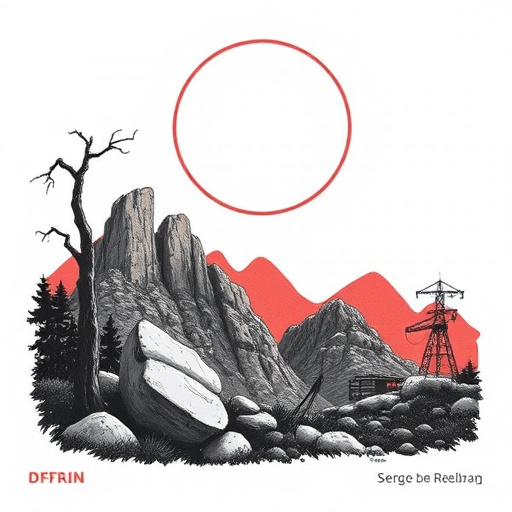DTF (Direct-to-Film) prints revolutionize film production with a direct digital-to-physical transfer process, offering unparalleled detail preservation and color vibrancy. This method streamlines workflows by eliminating intermediate steps, ensuring consistent high-quality results. The crucial cooling process prevents warping or blurring in delicate films. Creating DTF prints requires specific materials, equipment, and a meticulous process including exposure, development, and transfer. These prints are durable, ideal for archival purposes, and preserve every nuance of the original film. Overcoming challenges like color reproduction issues through controlled environments and calibrated equipment is vital for achieving optimal quality.
Discover the magic of DTF (Direct to Film) prints – a revolutionary film transfer method designed for easy removal after cooling. This article delves into the intricacies of creating high-quality, reusable DTF prints, ideal for various creative projects. From understanding the process and materials needed to troubleshooting common challenges, you’ll master the art of DTF printing. Uncover the benefits that make these prints a game-changer in today’s digital landscape.
- Understanding DTF Prints: A Brief Overview
- The Cooling Process and Its Importance
- Materials Required for Film Transfer
- Step-by-Step Guide to Creating DTF Prints
- Benefits of Using DTF Prints
- Common Challenges and Troubleshooting Tips
Understanding DTF Prints: A Brief Overview

DTF Prints, or Direct-to-Film prints, represent a cutting-edge method in the film industry for creating high-quality copies directly from digital sources. Unlike traditional printing methods that rely on intermediate steps, DTF technology allows for precise and direct transfer of images onto various media, including film stock. This innovative approach ensures exceptional detail preservation, vibrant colors, and a seamless transition from digital to physical format.
The beauty of DTF Prints lies in their versatility and efficiency. They are particularly ideal for applications where rapid cooling is essential, such as in specialized industrial or scientific settings. By enabling direct printing without the need for extensive post-processing, DTF technology streamlines workflows and reduces potential sources of error or degradation, making it a preferred choice for professionals seeking reliable and consistent results after cooling.
The Cooling Process and Its Importance

The cooling process in film transfers is a critical step that ensures the integrity and quality of DTF (Direct to Film) prints. After the transfer is complete, the heated materials need to cool down gradually to prevent warping, cracking, or blurring. This is particularly important for delicate films and fine details, where even slight temperature variations can significantly impact the final print.
A controlled cooling process allows the emulsion on the film to set properly, ensuring sharp images and accurate color representation. By allowing the materials to cool completely before removal, users can avoid damage to the prints, preserving their aesthetic value and longevity. This meticulous step is often overlooked but plays a pivotal role in achieving high-quality DTF prints.
Materials Required for Film Transfer

Creating high-quality DTF (Direct to Film) prints requires a specific set of materials. The process involves several key components, each playing a crucial role in achieving precise and vibrant results. Firstly, you’ll need a suitable film transfer material, designed for direct printing onto various substrates. This material should offer excellent optical density and color accuracy to ensure the final print is as intended.
Additionally, a reliable printer capable of handling high-resolution prints is essential. Inkjet printers are often preferred for their ability to produce sharp details and a wide color gamut. Furthermore, specific ink types designed for DTF printing are required; these inks offer fast drying times and exceptional adhesion to the transfer material, ensuring smooth transitions from digital to physical media.
Step-by-Step Guide to Creating DTF Prints

Creating DTF (Direct to Film) prints involves a precise, step-by-step process designed for optimal results. First, prepare your artwork or design by ensuring it’s in high-resolution format and optimized for printing. Then, select the appropriate film stock based on your desired output, considering factors like resolution, color accuracy, and longevity. Next, expose the film using a specialized printer, aligning the image precisely to prevent registration issues. After exposure, allow the film to develop completely before initiating the transfer process.
For the transfer, start by cleaning both the film and the substrate (e.g., t-shirt, mug) to eliminate any contaminants. Ensure your work area is free from static electricity, as this can cause the image to lift from the film. Then, carefully place the film onto the substrate, pressing it firmly to create a strong bond. Heat is then applied using a press or iron, melting the polyester in the film and transferring the design onto the substrate. Finally, cool the transferred print completely before handling to ensure the ink sets properly, resulting in vibrant, long-lasting DTF prints.
Benefits of Using DTF Prints

DTF (Direct-To-Film) prints offer several advantages for professionals and enthusiasts alike. One of the key benefits is their durability; these prints are designed to withstand handling and environmental factors, ensuring the longevity of your films. This makes them ideal for archival purposes or for use in exhibitions where a high level of preservation is required.
Additionally, DTF Prints enable precise color reproduction, delivering an authentic viewing experience that captures every nuance intended by the original filmmakers. This attention to detail ensures that when it comes to removing the film after cooling, you’ll be left with a pristine, high-quality print ready for display or further use.
Common Challenges and Troubleshooting Tips

Creating high-quality DTF (Direct to Film) prints can be a rewarding process, but it’s not without its challenges. One of the most common issues is achieving accurate color reproduction, especially when dealing with fine details and complex color palettes. This is often due to variations in film emulsion or environmental factors during the cooling period. To mitigate this, ensure your films are stored in a controlled environment, away from direct sunlight and extreme temperatures.
Troubleshooting tips include double-checking exposure settings and using calibrated equipment for optimal results. If prints exhibit uneven cooling, consider improving ventilation or using specialized cooling equipment designed for DTF printing. Regular cleaning of your film and print surface is also crucial to prevent dust and residue buildup, which can cause imperfections in the final product.














